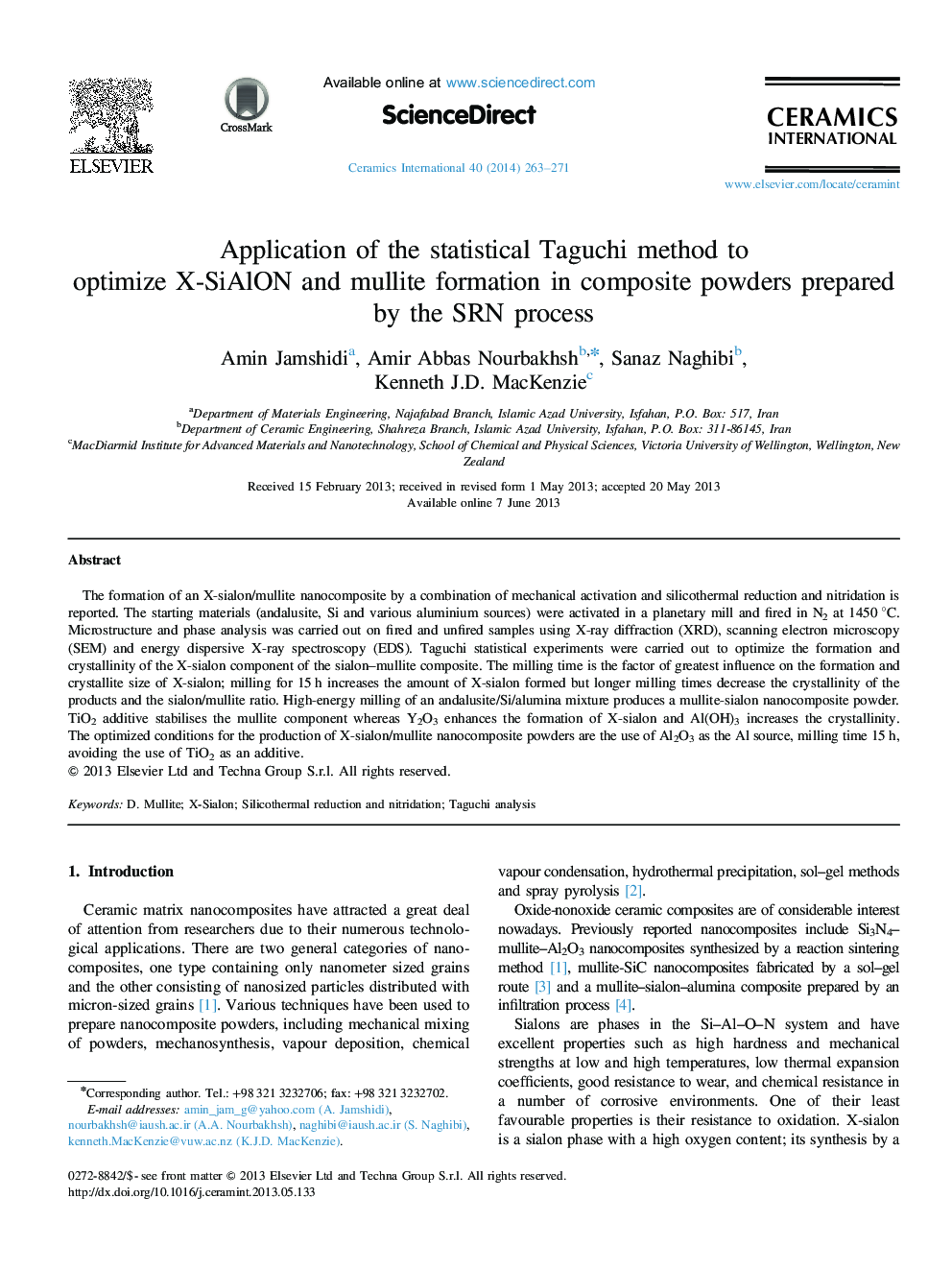| Article ID | Journal | Published Year | Pages | File Type |
|---|---|---|---|---|
| 1462257 | Ceramics International | 2014 | 9 Pages |
The formation of an X-sialon/mullite nanocomposite by a combination of mechanical activation and silicothermal reduction and nitridation is reported. The starting materials (andalusite, Si and various aluminium sources) were activated in a planetary mill and fired in N2 at 1450 °C. Microstructure and phase analysis was carried out on fired and unfired samples using X-ray diffraction (XRD), scanning electron microscopy (SEM) and energy dispersive X-ray spectroscopy (EDS). Taguchi statistical experiments were carried out to optimize the formation and crystallinity of the X-sialon component of the sialon–mullite composite. The milling time is the factor of greatest influence on the formation and crystallite size of X-sialon; milling for 15 h increases the amount of X-sialon formed but longer milling times decrease the crystallinity of the products and the sialon/mullite ratio. High-energy milling of an andalusite/Si/alumina mixture produces a mullite-sialon nanocomposite powder. TiO2 additive stabilises the mullite component whereas Y2O3 enhances the formation of X-sialon and Al(OH)3 increases the crystallinity. The optimized conditions for the production of X-sialon/mullite nanocomposite powders are the use of Al2O3 as the Al source, milling time 15 h, avoiding the use of TiO2 as an additive.
